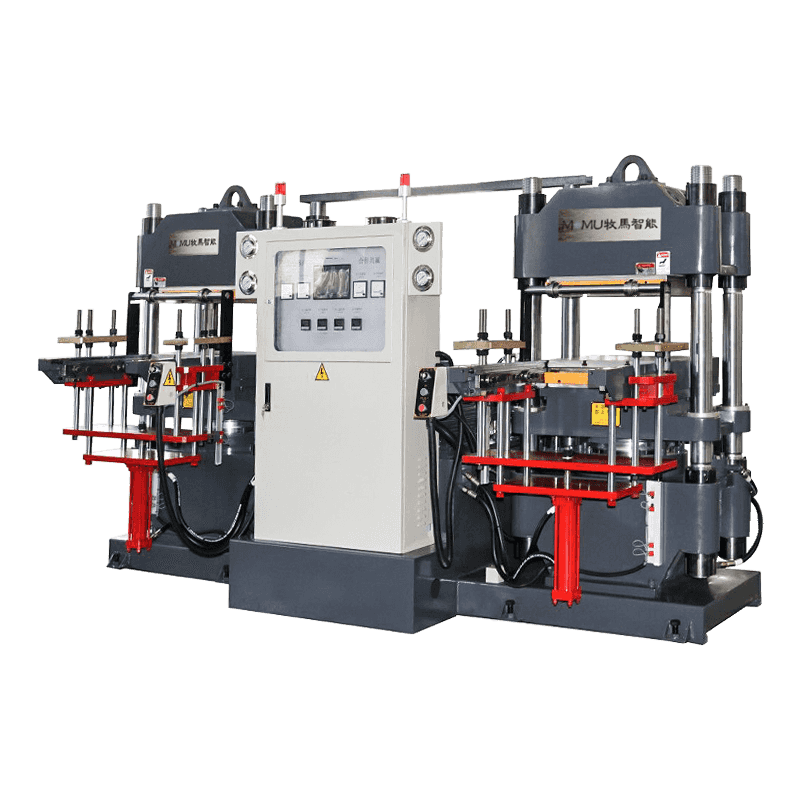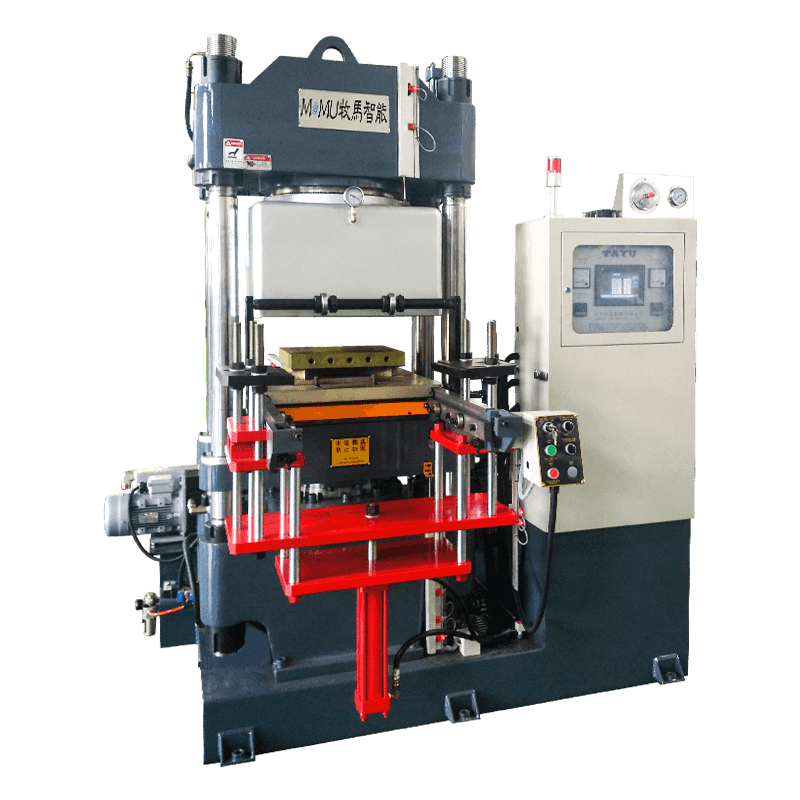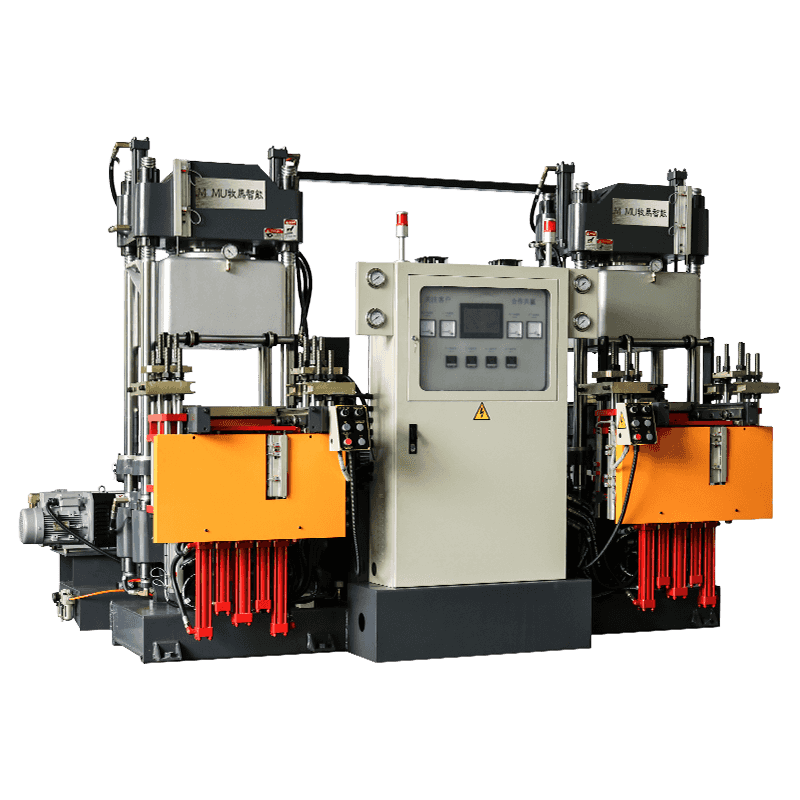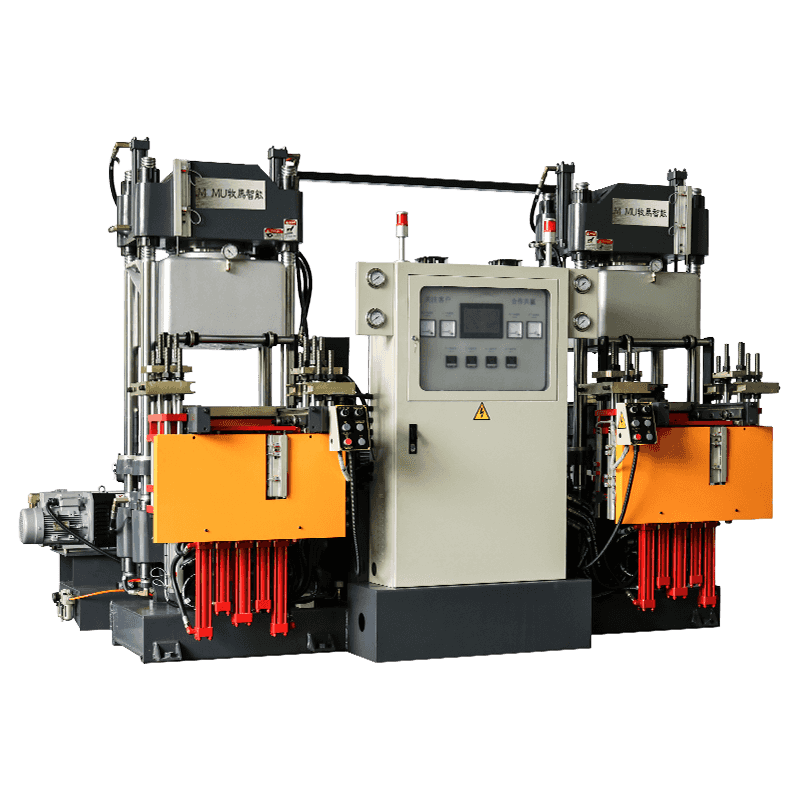A rubber compression molding machine is a critical piece of equipment in the rubber manufacturing industry, widely used to produce high-precision rubber components with consistent quality. This machine employs the compression molding process, which is ideal for creating durable and complex rubber products, ranging from automotive parts to consumer goods. In this article, we will explore the working principles, benefits, and diverse applications of rubber compression molding machines, highlighting their importance in modern manufacturing.
The rubber compression molding process involves placing a pre-measured amount of uncured rubber (known as a preform) into a mold cavity. The mold is then closed, and the rubber is compressed and heated within the cavity to initiate the curing or vulcanization process. The application of heat and pressure causes the rubber to flow and conform to the shape of the mold, resulting in a finished product that retains the desired dimensions and properties.
The platens are the flat, heated surfaces of the machine that press the mold halves together. They provide the necessary pressure to compress the rubber and maintain the mold’s temperature for curing.

The mold is the tool that shapes the rubber into the desired form. It consists of two halves, each with a cavity that defines the part’s shape. Molds can be custom-made to produce a wide variety of rubber components.
The hydraulic press applies the force needed to close the mold and compress the rubber. It ensures that the rubber fills the entire cavity and cures evenly.
Rubber compression molding is particularly cost-effective for producing large parts and high-volume orders. The process allows for the efficient use of materials, minimizing waste and reducing overall production costs. Additionally, compression molding machines can handle larger preforms, making them suitable for creating bigger components.
Rubber compression molding machines offer a high degree of consistency and precision in producing rubber parts. The process ensures that each part is identical in shape, size, and material properties, which is crucial for applications that require exact tolerances and reliable performance. The controlled environment within the mold also ensures uniform curing, leading to parts with consistent strength and durability.
These machines are versatile and can accommodate a wide range of rubber materials, including natural rubber, synthetic rubber, and silicone. This flexibility allows manufacturers to select the most suitable material for the specific application. Additionally, the compression molding process is compatible with complex designs, enabling the production of intricate parts with detailed features.
The compression molding process produces rubber components with excellent mechanical properties, such as high tensile strength, flexibility, and resistance to wear and tear. These attributes make the parts suitable for demanding applications, including automotive, aerospace, and industrial sectors.
The automotive industry is one of the largest users of rubber compression molding machines. These machines are employed to produce a variety of rubber components, such as gaskets, seals, O-rings, bushings, and vibration dampeners. These parts are essential for the proper functioning and safety of vehicles, as they provide sealing, insulation, and shock absorption.
In the aerospace and defense sectors, rubber compression molding machines are used to manufacture critical components like gaskets, seals, and diaphragms. These parts must withstand extreme temperatures, pressures, and chemical exposure, making the precision and reliability of compression molding essential.
Rubber compression molding is also widely used in the production of consumer goods, such as kitchen utensils, footwear soles, and sporting equipment. The ability to produce high-quality, durable products at scale makes this process ideal for mass production in consumer markets.
In industrial settings, rubber compression molding machines produce parts like gaskets, seals, and vibration isolators for machinery and equipment. These components are critical for maintaining the integrity and performance of industrial systems, particularly in harsh environments where durability is paramount.
Rubber compression molding machines are indispensable in the production of high-precision, durable rubber components. Their ability to consistently produce complex parts with excellent mechanical properties makes them a cornerstone of modern manufacturing across a wide range of industries. As technology advances, the efficiency and capabilities of these machines will continue to evolve, further cementing their role in the future of rubber manufacturing.





